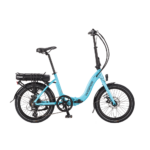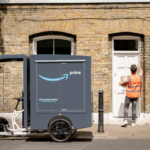The Ah rating of the battery doesn't directly determine how much current will be delivered to the controller. The voltage is the more important factor. I try to explain.
If your current controller and motor combination are pulling lets say 10A at 36V, that will equate to 360W being pulled from your battery. That is likely approximately the peak or max power that is delivered for a regular 250W motor. A typical 36V 250W rated will have a current limit in th region of about 10 to 15A.
If you increase the supply voltage to say 48V, that will cause more current to flow. Power = volts*current. If you increase the voltage by 48/36 or 1.33, you will also increase your current by the same amount so it will now deliver 13.3A at the higher voltage rather than 10A at 36V. This results in a power increase from 360W to 360*1.33^2 = 640W. So the power is now 178% of the original standard figure.
The limiting factor is possibly your controller but most can accept a step up from 36 to 48V. It will also put more strain on the motor and the type of motor used will effect how suitable it is fo overvoltage. All the above is asuming you are using a typical hub motor.
There's a bit more to it than the above, but don't mind giving you some pointers if you want







